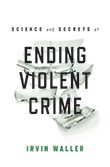This is a shoutout. Reinvest to get Less Violence, Not More Costs.
With the presidential debate accelerating, the issue of 2.3 million Americans behind bars – 1 in 100 adults – is in the headlines. The critics stress that too many of these prisoners are poor and black. The defenders stress that if you do the crime, you should do the time.
But this is not just whether law enforcement and judges punished fairly but why legislators did not invest in preventing the violence in the first place.
A plethora of government agencies provide living proof that violence is preventable not inevitable. The US Department of Justice and the World Health Organization are my two favorites but I have provided a longer list.
Yet there is a penury of investment in stopping homicides and serious assaults. Even high profile and successful examples such as project ceasefire in Chicago are struggling to be replicated where they are needed.
The renowned Pew Center for the States has established partnerships with half a dozen US States that are ¨willing to shift money away from ineffective programs toward those shown to be better uses of taxpayer dollars. This requires a more disciplined approach to budgeting, using the same hard-nosed assessments that businesses use to drive investment decisions.¨
The basis for these partnerships is the proof that governments can reduce the shocking harm to crime victims as well as the disturbing costs to taxpayers. It uses the Washington State Institute for Public Policy (WSIPP) which provides a unique portal for studies that compare the costs of innovation with their benefits in reducing costs of law enforcement and criminal justice on the one hand and the costs of crime to victims on the other.
Pew quotes the experience in Washington State that ¨Legislators from both parties say the model has helped them get the best return on investment, transcend partisan gridlock, make decisions based on facts and choose options that are the most cost-effective in the long run, even if they are not the most politically appealing in the short term.¨
Canada is already using ROI best practices, such as the Province of Alberta, the Winnipeg Auto Theft Suppression Strategy and Waterloo Region´s 40 year Violence Prevention Plan. But it could do much more. Mexico has just adopted a law to pursue violence prevention.
Maybe it is time to shift the conversation from how much punishment to how much prevention and then to how we can make that shift to rebalance justice. My analysis is that a 10% shift using our present knowledge would achieve a 50% reduction in harm to victims and similar decreases in the demand for incarceration – see for instance Less Law, More Order, chapter 8.

